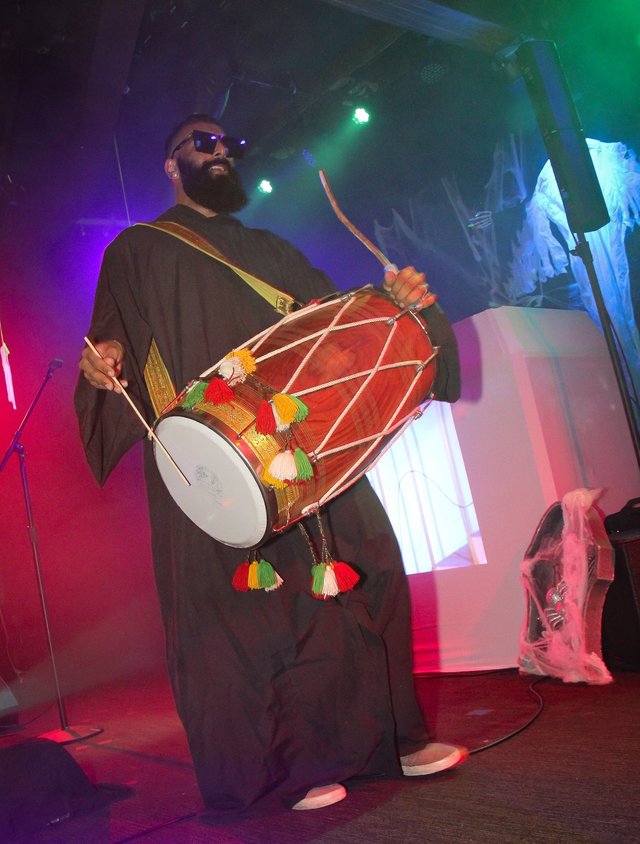The Hindu festival of Holi hits Seattle clubs
This week, Hindus across the world celebrate Holi, the annual “festival of colors” that marks the beginning of spring. The jubilant fete, which also symbolizes the triumph of good over evil, involves playing with colorful powders known as gulal.
Find yourself in Belltown or Fremont this weekend and you might be surrounded by bargoers who look like survivors of a massive rainbow-colored flour fight. No, it’s not a technicolored dream. A few hundred weekend warriors will hit the clubs in honor of an ancient Hindu festival that long predates shot specials.
This week, Hindus across the world celebrate Holi, the annual “festival of colors” that marks the beginning of spring. The jubilant fete, which also symbolizes the triumph of good over evil, involves playing with colorful powders known as gulal. While Holi is traditionally a daytime, family-friendly affair (a Holi Festival of Color takes place noon to 5 p.m. Saturday, March 24, at Marymoor Park in Redmond, for instance), two veteran Northwest promoters have remixed the holiday for the 21-plus club crowd.
“It’s something that’s hugely celebrated and it’s very participatory,” says Shelly Kamran, founder of Seattle’s BollyGrooves.
The recruiter by day, party starter by night has been throwing annual Holi bashes and other Bollywood-themed events around Seattle for more than 13 years. On Saturday, March 3, she plans to turn the Crocodile’s dance floor into a kaleidoscopic sea of bodies in motion while DJs bump Bollywood hits and the occasional Western club jam. An outdoor area will be set up for those looking to “play Holi” — tossing around the powdered colors and smearing them on themselves, friends and willing strangers.
After graduating from the University of Washington in 2003, Kamran started throwing events geared toward Seattle’s Indian community while looking for work. A happy-hour meetup unexpectedly drew 200 people and eventually led to a series of Bollywood club nights. In the pre-Facebook era, she largely promoted her events through an Indian thread on an internal Microsoft communications system.
Over the years, Kamran, who has worked for multiple companies with close Microsoft connections, says her events have been a hit with Seattle’s ever-growing Indian community that came with the tech boom. According to census data, King County’s Asian Indian population nearly quadrupled between 2002 and 2016. She estimates 80 percent of the crowd at most of her parties is of Indian descent.
“There still is a big audience that is underserved when it comes to true Bollywood music,” she says of India’s pervasive pop music, which has a symbiotic relationship with the country’s film industry.
Across the canal, Portland-based promoter Prashant Kakad says the crowds at his annual Nectar Lounge Holi party — perhaps hyperbolically billed as being “like the best five hours of Burning Man” — are a little more mixed.
“It really is about bringing everybody together,” Kakad says, “giving the people who are, like me, from India, an opportunity to experience their culture on a wider scale within the mainstream U.S. culture, and giving people who are from here an experience of Indian culture that is more accessible.”
With his Jai Ho! Dance Party group, the tech-worker-turned-DJ throws Bollywood-style dance parties all over the West Coast. The Seattle crowds are consistently strong, he says, thanks to a “vibrant and active Indian community” and the city’s broader inclination “toward art, music and dance.” When Kakad first came to the U.S. to attend Cornell University, he was struck by the number of Holi festivals scattered throughout the country. In Utah of all places, a festival outside of Salt Lake City has reportedly drawn upward of 35,000 people.
With Holi falling on Thursday and Friday, March 1-2 — in line with Purnima, the first full moon of the month — Kamran and Kakad have pushed their after-dark parties to Saturday, with Kakad adding an all-ages event Sunday afternoon. Expect a mix of Bollywood and club hits inside, and more traditional “folk-sounding music” and Holi-themed songs in the outdoor tent open to color play. At the Crocodile, partygoers are encouraged to wear white so that the colors pop under the black lights (though it makes it more difficult to wash out). In lieu of serving bhang — a milky marijuana-laced drink — they’ll have a few colorful Holi-inspired drink specials.
Of course, clubifying Holi isn’t exclusively an American concept. Several years ago, Kakad was back in India over Holi and hit a festival put on by his Bollywood DJ buddies. He recalls hearing very little Bollywood and the few songs that found their way through the speakers had more of an EDM (electronic dance music) bent.
“In a weird way, people like me who come from India, we preserve that culture that we grew up in almost a little bit more than people who are in India,” he says, comparing the more DJ-oriented Holi events. “I think here is a little bit more authentic in some ways.”